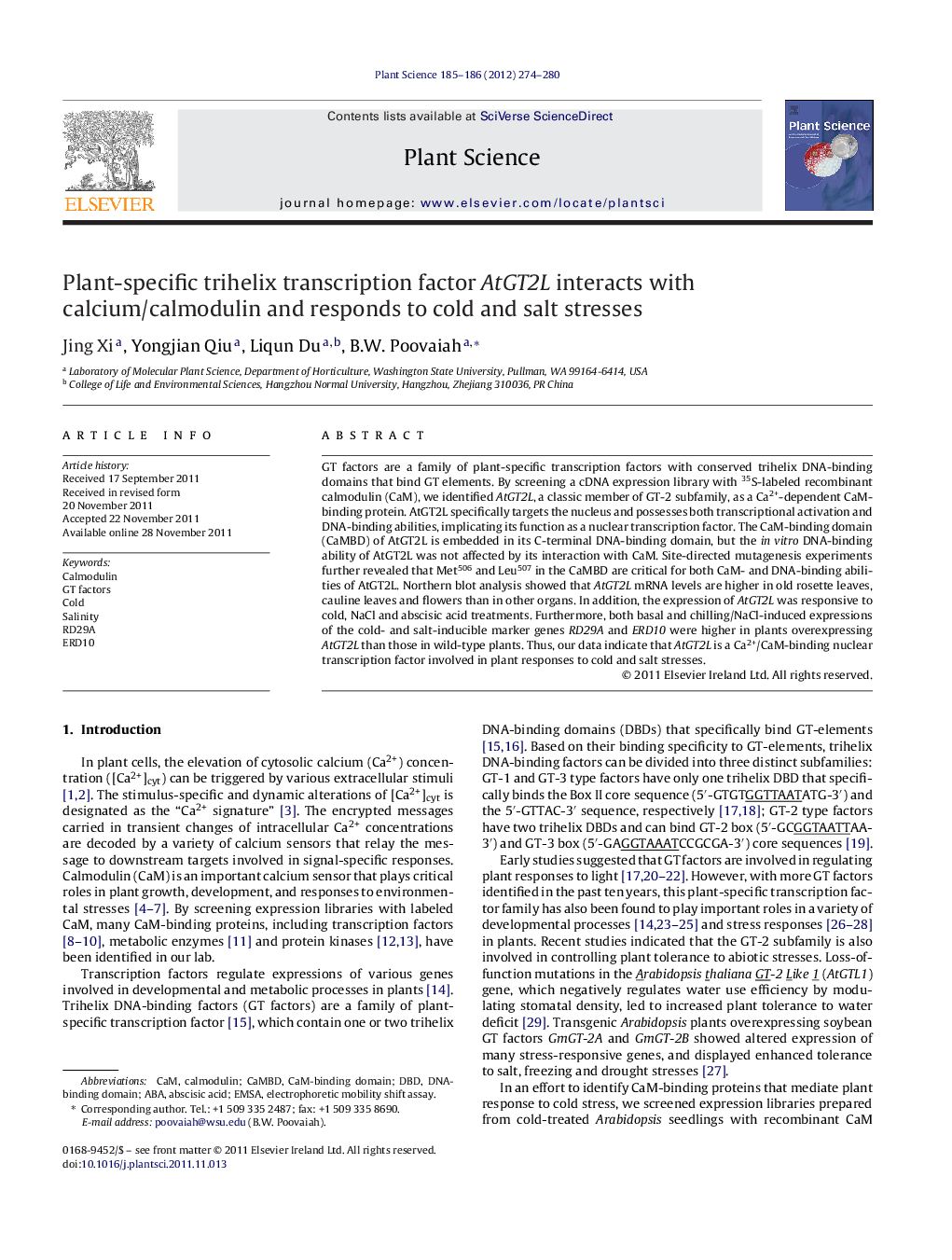| Article ID | Journal | Published Year | Pages | File Type |
|---|---|---|---|---|
| 2017463 | Plant Science | 2012 | 7 Pages |
GT factors are a family of plant-specific transcription factors with conserved trihelix DNA-binding domains that bind GT elements. By screening a cDNA expression library with 35S-labeled recombinant calmodulin (CaM), we identified AtGT2L, a classic member of GT-2 subfamily, as a Ca2+-dependent CaM-binding protein. AtGT2L specifically targets the nucleus and possesses both transcriptional activation and DNA-binding abilities, implicating its function as a nuclear transcription factor. The CaM-binding domain (CaMBD) of AtGT2L is embedded in its C-terminal DNA-binding domain, but the in vitro DNA-binding ability of AtGT2L was not affected by its interaction with CaM. Site-directed mutagenesis experiments further revealed that Met506 and Leu507 in the CaMBD are critical for both CaM- and DNA-binding abilities of AtGT2L. Northern blot analysis showed that AtGT2L mRNA levels are higher in old rosette leaves, cauline leaves and flowers than in other organs. In addition, the expression of AtGT2L was responsive to cold, NaCl and abscisic acid treatments. Furthermore, both basal and chilling/NaCl-induced expressions of the cold- and salt-inducible marker genes RD29A and ERD10 were higher in plants overexpressing AtGT2L than those in wild-type plants. Thus, our data indicate that AtGT2L is a Ca2+/CaM-binding nuclear transcription factor involved in plant responses to cold and salt stresses.
► AtGT2L is a calcium-dependent calmodulin-binding nuclear transcription factor. ► Met506 and Leu507 are indispensible for CaM- and DNA-binding abilities of AtGT2L. ► The expression of AtGT2L can be induced by cold and salt stresses. ► The expression of Rd29A is elevated in AtGT2L overexpression plants.
